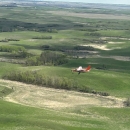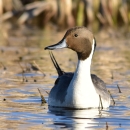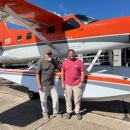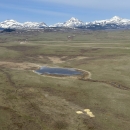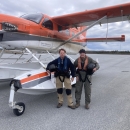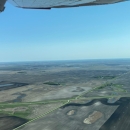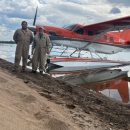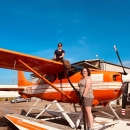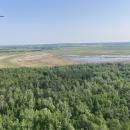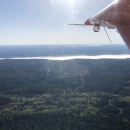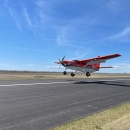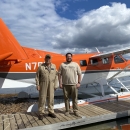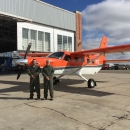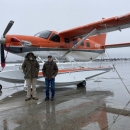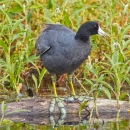States
Alaska, Maine, Montana, North Dakota, South DakotaThe Waterfowl Breeding Population and Habitat Survey (WBPHS) is conducted annually in May and June by the U.S. Fish and Wildlife Service and the Canadian Wildlife Service. The aerial breeding surveys that evolved into the WBPHS began in 1947. The primary purpose of the WBPHS is to provide information on spring population size and trajectory for 19 North American duck species (or species groups), Canada Geese (Branta canadensis), American Coot (Fulica americana), and swans (Cygnus spp.) and to evaluate habitat conditions in Prairie-Parkland Canada, via the counting of waterfowl breeding ponds.
The data are used to establish annual hunting regulations in the United States and Canada and provide a long-term time series important for researching bird-environment relationships critical to effective conservation planning for waterfowl. The survey is conducted by ground, airplane, and helicopter over a 2 million square mile area that covers the principal breeding areas of North America, and includes parts of Alaska, Canada, and the northcentral US. This survey is also referred to as the Breeding Population Survey (B-POP) or the May Survey. To read individual field reports from pilot biologists and ground crews detailing first-hand observations on what they saw during each year's survey please visit the WBPHS Field Reports Library Collection.
Data are available beginning in 1955, which is the year the survey is typically described as becoming operational, although design, methods, and coverage continued to evolve for many years. Data are not available for 2020 and only available for Alaska (strata 1-11) in 2021, due to fieldwork restrictions resulting from the COVID-19 pandemic. To obtain WBPHS data or historical documents, including older population status reports not included in the Waterfowl Population Status Report Library Collection, please visit ServCat Program Record # 47314.







